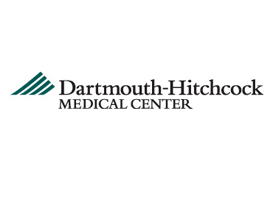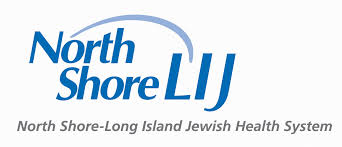Busulfan, Fludarabine Phosphate, and Anti-Thymocyte Globulin Followed By Donor Stem Cell Transplant and Azacitidine in Treating Patients With High-Risk Myelodysplastic Syndrome and Older Patients With Acute Myeloid Leukemia
| Status: | Active, not recruiting |
|---|---|
| Conditions: | Cancer, Blood Cancer, Women's Studies, Anemia, Hematology |
| Therapuetic Areas: | Hematology, Oncology, Reproductive |
| Healthy: | No |
| Age Range: | 18 - 74 |
| Updated: | 3/9/2019 |
| Start Date: | July 15, 2010 |
Phase II Study of the Addition of Azacitidine (NSC#102816) to Reduced-Intensity Conditioning Allogeneic Transplantation for Myelodysplasia (MDS) and Older Patients With AML
This phase II clinical trial is studying how well giving busulfan, fludarabine phosphate, and
anti-thymocyte globulin followed by donor stem cell transplant and azacitidine works in
treating patients with high-risk myelodysplastic syndrome and older patients with acute
myeloid leukemia. Giving low doses of chemotherapy, such as busulfan and fludarabine
phosphate, before a donor stem cell transplant helps stop the growth of cancer cells. It also
stops the patient's immune system from rejecting the donor's stem cells. The donated stem
cells may replace the patient's immune cells and help destroy any remaining cancer cells
(graft-vs-tumor effect). Sometimes the transplanted cells from a donor can also make an
immune response against the body's normal cells. Giving anti-thymocyte globulin before
transplant and giving azacitidine, tacrolimus, and methotrexate after the transplant may stop
this from happening.
anti-thymocyte globulin followed by donor stem cell transplant and azacitidine works in
treating patients with high-risk myelodysplastic syndrome and older patients with acute
myeloid leukemia. Giving low doses of chemotherapy, such as busulfan and fludarabine
phosphate, before a donor stem cell transplant helps stop the growth of cancer cells. It also
stops the patient's immune system from rejecting the donor's stem cells. The donated stem
cells may replace the patient's immune cells and help destroy any remaining cancer cells
(graft-vs-tumor effect). Sometimes the transplanted cells from a donor can also make an
immune response against the body's normal cells. Giving anti-thymocyte globulin before
transplant and giving azacitidine, tacrolimus, and methotrexate after the transplant may stop
this from happening.
PRIMARY OBJECTIVE:
I. To determine if this treatment can improve 2-year progression-free survival (PFS) in
patients with high risk myelodysplastic syndrome (MDS) and in patients with acute myeloid
leukemia (AML) >= 60 yrs age
SECONDARY OBJECTIVES:
I. To determine the safety and feasibility of using post-transplantation azacitidine.
II. To determine the ability to use pharmacokinetic-directed busulfan to achieve area under
the curve (AUC) within 20% of target AUC in > 80% of patients.
III. To determine the rate of grade II-IV and III-IV acute graft-vs-host disease (GVHD).
IV. To determine the incidence of extensive chronic GVHD. V. To determine treatment-related
mortality at 100 days and at 1 year. VI. To determine 5-year overall survival.
OUTLINE:
REDUCED-INTENSITY CONDITIONING: Patients receive fludarabine phosphate intravenously (IV)
over 30 minutes on days -7 to -3, busulfan IV over 45 minutes on days -6 to -3, and
anti-thymocyte globulin IV over 4-10 hours on days -6 to -5 (matched sibling donor [MSD]) or
-6 to -4 (matched unrelated donor [MUD]).
TRANSPLANTATION: Patients undergo allogeneic hematopoietic stem cell transplantation on day 0
or on days 0-1.
GRAFT-VS-HOST DISEASE PROPHYLAXIS: Patients receive tacrolimus orally (PO) or IV on days -2
to 90 with taper on days 150-180. Patients also receive methotrexate IV on days 1, 3, 6
(MSD), and 11 (MUD).
CONSOLIDATION: Beginning on day 42, patients receive azacitidine subcutaneously (SC) or IV on
days 1-5.
Treatment repeats every 4 weeks for 6 courses. Blood and bone marrow samples may be collected
periodically for correlative and pharmacokinetic studies.
After completion of study treatment, patients are followed up every 6 months for 5 years.
I. To determine if this treatment can improve 2-year progression-free survival (PFS) in
patients with high risk myelodysplastic syndrome (MDS) and in patients with acute myeloid
leukemia (AML) >= 60 yrs age
SECONDARY OBJECTIVES:
I. To determine the safety and feasibility of using post-transplantation azacitidine.
II. To determine the ability to use pharmacokinetic-directed busulfan to achieve area under
the curve (AUC) within 20% of target AUC in > 80% of patients.
III. To determine the rate of grade II-IV and III-IV acute graft-vs-host disease (GVHD).
IV. To determine the incidence of extensive chronic GVHD. V. To determine treatment-related
mortality at 100 days and at 1 year. VI. To determine 5-year overall survival.
OUTLINE:
REDUCED-INTENSITY CONDITIONING: Patients receive fludarabine phosphate intravenously (IV)
over 30 minutes on days -7 to -3, busulfan IV over 45 minutes on days -6 to -3, and
anti-thymocyte globulin IV over 4-10 hours on days -6 to -5 (matched sibling donor [MSD]) or
-6 to -4 (matched unrelated donor [MUD]).
TRANSPLANTATION: Patients undergo allogeneic hematopoietic stem cell transplantation on day 0
or on days 0-1.
GRAFT-VS-HOST DISEASE PROPHYLAXIS: Patients receive tacrolimus orally (PO) or IV on days -2
to 90 with taper on days 150-180. Patients also receive methotrexate IV on days 1, 3, 6
(MSD), and 11 (MUD).
CONSOLIDATION: Beginning on day 42, patients receive azacitidine subcutaneously (SC) or IV on
days 1-5.
Treatment repeats every 4 weeks for 6 courses. Blood and bone marrow samples may be collected
periodically for correlative and pharmacokinetic studies.
After completion of study treatment, patients are followed up every 6 months for 5 years.
Inclusion Criteria:
- Meets one of the following sets of criteria:
- Myelodysplastic syndromes (MDS):
- Disease with high-risk features (found either at diagnosis or before
initiation of cytotoxic therapy), defined as one of the following:
- International prognostic scoring system (IPSS) risk >= intermediate-2
- Refractory anemia with excess blasts by French-American-British (FAB)
classification
- High-risk cytogenetics (either complex or -7)
- Less than 10% bone marrow blasts as determined by bone marrow biopsy within
the past 4 weeks (reduction in marrow blast percentage may be achieved with
chemotherapy or other therapy)
- Less than 75 years old
- Acute myeloid leukemia (AML):
- No FAB M3
- No acute leukemia following blast transformation of prior chronic
myelogenous leukemia or other myeloproliferative disease
- Patients with preceding MDS or treatment-related AML are eligible
- Prior central nervous system (CNS) involvement is allowed provided the
disease is in remission at transplantation
- Morphologic complete remission (leukemia-free state) is defined as meeting
all of the following criteria:
- Bone marrow blasts < 5% (as determined by bone marrow within the past 4
weeks), but without requirement for normal peripheral blood counts
- No extramedullary leukemia
- No blasts in peripheral blood
- Achieved complete remission (CR) after no more than 2 courses of induction
chemotherapy
- Patients treated with azacitidine or decitabine who achieve a
leukemia-free state are eligible (may have required up to 4 courses of
therapy to reach this status)
- Age 60 to 74 years
- Donors must meet the following criteria:
- One of the following:
- HLA-identical sibling (6/6) by serologic typing for class (A, B) and
low-resolution molecular typing for class II (DRB1)
- Matched unrelated donor (8/8) by high-resolution molecular typing at HLA-A,
-B, -C, and DRB1
- No syngeneic donors
- Eastern Cooperative Oncology Group (ECOG) performance status 0-2
- Calculated creatinine clearance ≥ 40 mL/min
- Bilirubin < 2 mg/dL OR bilirubin 2-3 mg/dL provided direct bilirubin is normal
- Aspartate aminotransferase (AST) < 3 times upper limit of normal
- Diffusing capacity of the lung for carbon monoxide (DLCO) > 40% with no symptomatic
pulmonary disease
- Left ventricle ejection fraction (LVEF) >= 30% by echocardiogram (ECHO) or multigated
acquisition (MUGA)
- Not pregnant or nursing
- Negative pregnancy test
- Fertile patients must use effective contraception
- No uncontrolled diabetes mellitus or active serious infections
- No known hypersensitivity to E. coli-derived products, azacitidine, or mannitol
- No human immunodeficiency virus (HIV) infection or active hepatitis B or C
- Prior azacitidine or decitabine allowed
- No patients who progressed from MDS to AML during treatment with azacitidine or
decitabine
- At least 4 weeks since prior deoxyribonucleic acid (DNA)-hypomethylating chemotherapy,
radiotherapy, and/or surgery
- No more than 2 courses of consolidation therapy before transplantation (for patients
with AML)
- Any consolidation regimen that does not require transplantation can be used
- No more than 6 months from documentation of morphologic CR to transplantation
We found this trial at
17
sites
Dartmouth Hitchcock Medical Center Dartmouth-Hitchcock is a national leader in patient-centered health care and building...
Click here to add this to my saved trials
North Shore University Hospital North Shore-LIJ Health System includes 16 award-winning hospitals and nearly 400...
Click here to add this to my saved trials
22 South Greene Street
Baltimore, Maryland 21201
Baltimore, Maryland 21201
410-328-7904

University of Maryland Greenebaum Cancer Center The University of Maryland Marlene and Stewart Greenebaum Cancer...
Click here to add this to my saved trials
Click here to add this to my saved trials
Click here to add this to my saved trials
Click here to add this to my saved trials
Click here to add this to my saved trials
Click here to add this to my saved trials
Click here to add this to my saved trials
Click here to add this to my saved trials
Beebe Medical Center Located in beautiful historic Lewes, Delaware, near Rehoboth Beach, Beebe Healthcare offers...
Click here to add this to my saved trials
Click here to add this to my saved trials
Click here to add this to my saved trials
4755 Ogletown-Stanton Road
Newark, Delaware 19718
Newark, Delaware 19718
302-733-1000

Christiana Care Health System - Christiana Hospital A 913-bed, 1.3-million-square-foot, modern facility in Newark, Delaware,...
Click here to add this to my saved trials
Click here to add this to my saved trials
660 S Euclid Ave
Saint Louis, Missouri 63110
Saint Louis, Missouri 63110
(314) 362-5000

Washington University School of Medicine Washington University Physicians is the clinical practice of the School...
Click here to add this to my saved trials
1 Medical Center Blvd
Winston-Salem, North Carolina 27157
Winston-Salem, North Carolina 27157
336-716-2011

Wake Forest University Health Sciences Welcome to Wake Forest Baptist Medical Center, a fully integrated...
Click here to add this to my saved trials


